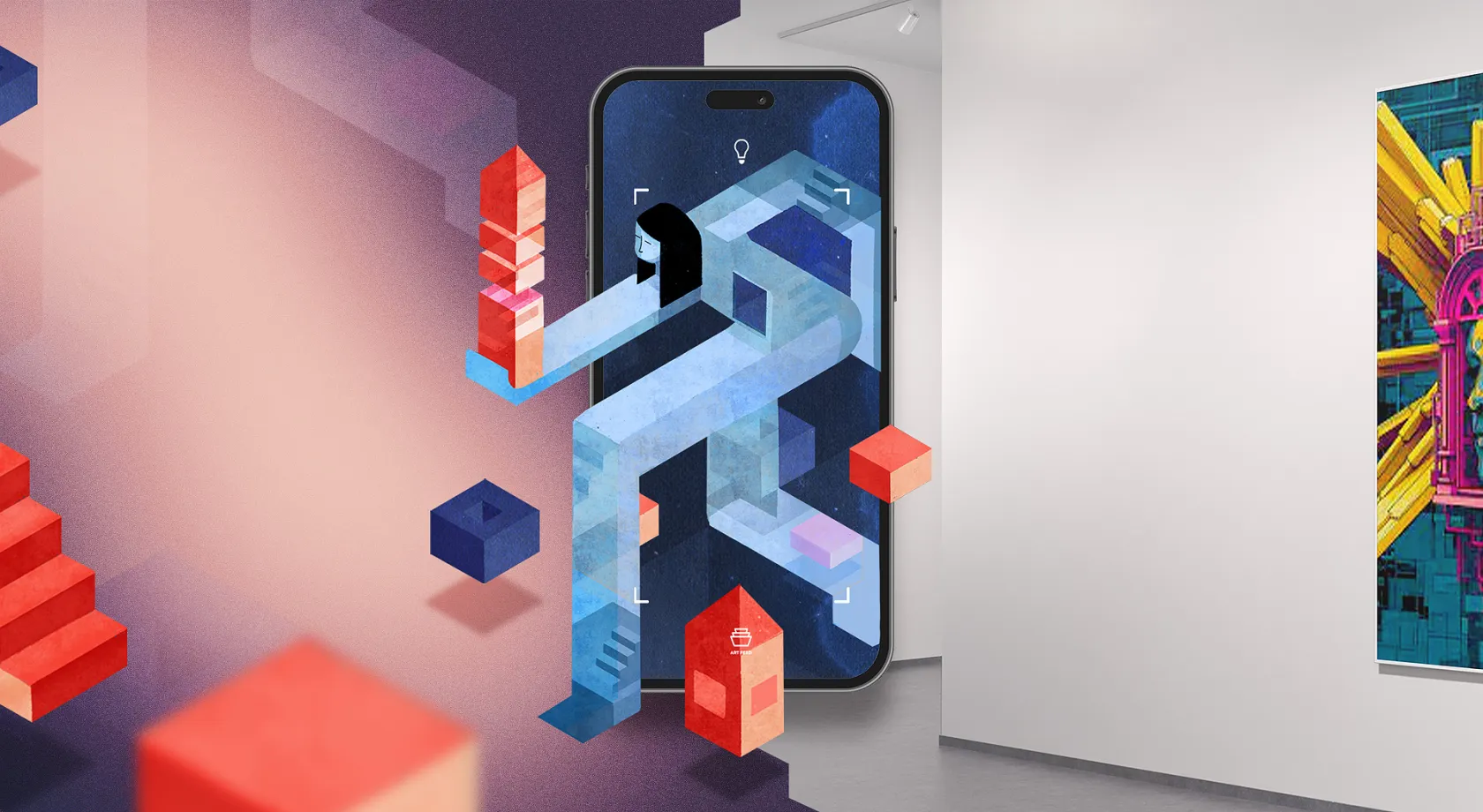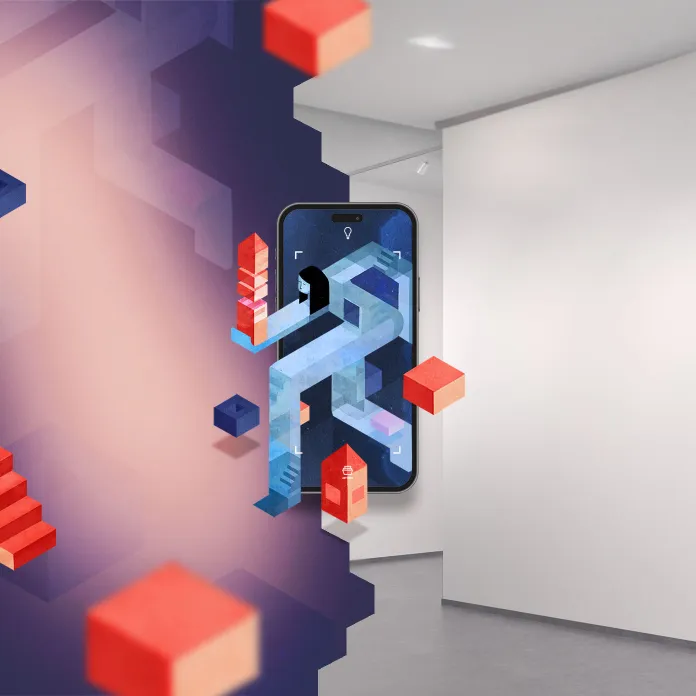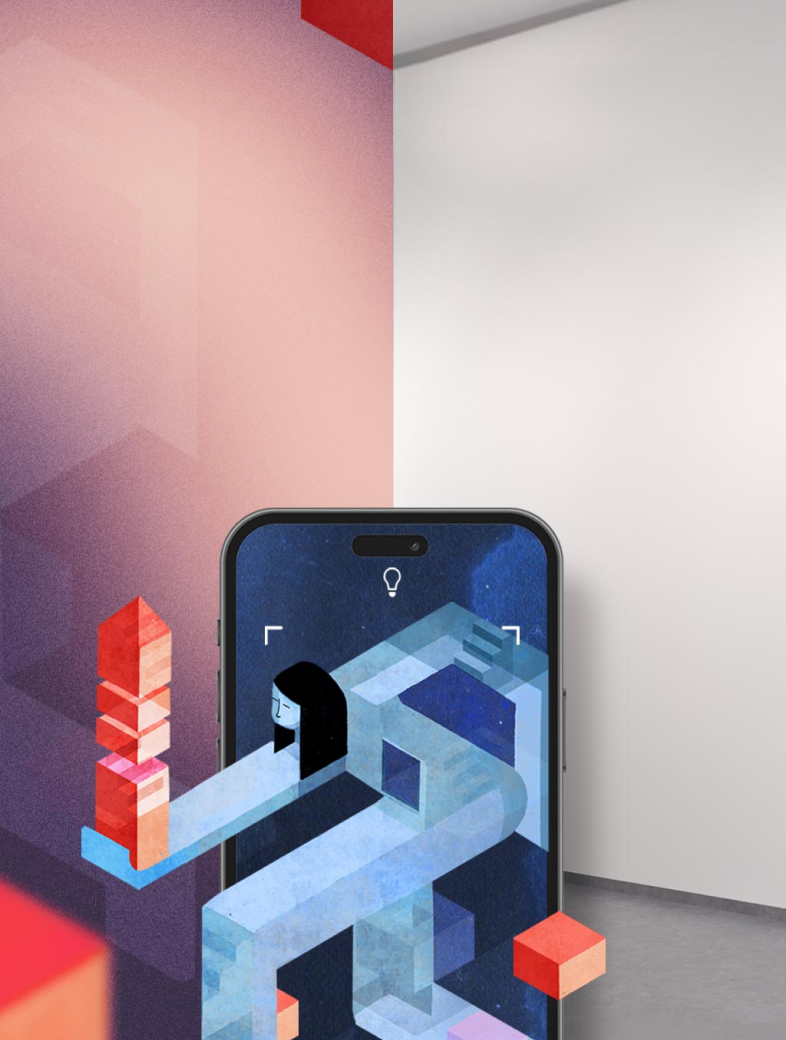Artist Interview with Colin Goldberg
Commodore 64, the Light Pen, CD-ROMs, Wacom drawing tablets… These are words I’d never heard of before interviewing Colin Goldberg (yes, I’m Gen Z). In fact, very few of us can say that they launched their career simultaneously with the World Wide Web. What a flex.
Graduating in 1994 with a degree in Traditional Painting and an affinity for technology in the same year the World Wide Web (WWW) launched has steered Goldberg towards developing CD-ROMs to distribute multimedia. As the WWW seeped into our daily lives, he was quick to jump on what many people thought was a fad: he learned HTML and worked with Ad agencies as a web developer and designer.
“It's incredible really to me how quickly things have evolved since then even in the next couple of years from 1994 to 2000 it really exploded where people who never would have used a computer were all of a sudden using it in their daily lives for email, for web, stuff like that. So, it became a much bigger part of our culture. And at that point, I got involved, using the computer in my art and started experimenting with doing digital drawings.”
After all, AR/VR technology went from being something out of a sci-fi book and became part of our reality today in less than 30 years. In Goldberg’s Metagraph book a lot of pieces were from 1999 and the other half were from around 2004. Even after ushering in the Digital Age, animating the artworks didn’t cross his mind.
Techspressionism
Techspressionism is a term coined by Goldberg himself as a title to one of his art shows in 2011. In 2020, Goldberg saw a magazine article featuring artist Oz Van Rosen, a self-proclaimed "abstract techspressionist." Goldberg then reached out to her to organise an artist salon where like-minded people could discuss philosophy and art, much like surrealist artist salons in the 1920s and 1930s.
As the group got together to define their movement they settled on it being an artistic approach in which technology is utilized as a means to express emotional experience, rather than it being an artistic “style”, which ended up being a very important difference as the latter implies that all of the work sort of looks similar.
“The idea behind it is that it's a movement that's based on self-identification where if someone feels like they identify with this idea, then they are a techspressionist. There doesn't have to be some art critic that says these are the ones who are part of this group. I would definitely say techspressionism transcends my own personal work as an artist.”
Once the broad idea behind Techspressionism was agreed upon, Goldberg took to Instagram to spread the work about the movement through DMs and commenting #techspressionism under posts from artists who might be interested. Today, there are 80,000 posts using that hashtag and the Techspressionism movement encompasses 350 artists from 45 different countries, mostly thanks to Goldberg's efforts on Social Media and organising salons which transitioned to Zoom and bloomed during the COVID-19 pandemic.

As cool as that may sound, mixing technology with art is still seen in many artistic circles as a transgression against traditional art forms. In Goldberg’s eyes, this scenario plays out every time an artist introduces a new art form or medium. Jackson Pollock, a great source of inspiration for Goldberg, challenged the status quo by putting what many saw as childish art into the context of fine art. Goldberg chose to follow in his footsteps and embrace new technology in his art, which earned him a Pollock Grant in 2014.
Putting the Art in Artivive
Goldberg’s first encounter with Artivive likely came through recommendations from other artists or online research. Intrigued by its potential, he decided to experiment with the platform in a collaborative project with his young daughter. She created a drawing of their family cat, and they paired it with a video of the cat in action. Using Artivive’s editor, the drawing became a trigger image that transformed into the video through the app.
Seeing his daughter’s drawing come to life sparked Goldberg’s imagination and led him to consider AR as a significant element in his work. One of his major projects, the Metagraphs series, became the perfect vehicle for exploring AR. This body of work, originally conceived over 25 years ago, was created using Adobe Illustrator and featured mathematically-defined vector graphics. The format allowed the images to be scaled to monumental sizes without losing clarity. Goldberg had already been producing large-scale prints of these pieces on vinyl banners, but incorporating AR added an entirely new dimension.
Transition to NFTs and AR Integration
Around 2020, as NFTs gained popularity, Goldberg began to explore their potential. He learned about NFTs through a fellow artist and quickly became immersed in the process of minting his works on blockchain platforms like Rarible. His Metagraphs series evolved into a collection of 23-second audiovisual loops, each minted as an NFT. The number 23 held personal significance for Goldberg, as both he and his daughter share birthdays on the 23rd of different months, with her birth timestamped at 6:23 p.m. on June 23rd.
Inspired by his earlier experiments with Artivive and the success of his NFT collections, Goldberg had a pivotal realization: he could connect his static Metagraphs drawings to their animated counterparts through AR. This idea culminated in Kneeling Icon, a black-and-white piece that became the cover image for his Metagraphs book. Goldberg tested the concept by creating a print and uploading the animation to Artivive, and the result was transformative.
The Impact of Artivive on Goldberg’s Career
The inclusion of AR not only changed Goldberg’s artistic approach but also elevated his career to new heights. Kneeling Icon was showcased at a group exhibition in New York City and caught the attention of the Hearst Corporation. The company purchased the piece for their corporate art collection, where it was displayed alongside works by renowned artists like Ai Weiwei. Goldberg attributes the sale and recognition to the innovative AR component, which captivated curators and collectors alike.
“There's no way I would have ended up showing my work in that context if it was just a painting, the fact that it is an augmented reality piece is what got it into the exhibition. ”
The success of Kneeling Icon encouraged Goldberg to integrate AR into other exhibitions. In a recent Brooklyn museum show, one of his large-scale AR pieces featured a QR code inviting visitors to scan and experience the augmented elements. The curator even set up an iPad with the Artivive app to demonstrate the technology, ensuring accessibility for all attendees. Through these exhibitions, Goldberg’s AR-enabled art reached a wider audience and contributed to Artivive’s growing popularity within the artistic community.
Advice for Emerging Artists
While Goldberg embraces technological innovation, he remains cautious about the implications of AI-generated art. He acknowledges the concerns of artists and writers regarding copyright and job displacement but maintains that adapting to new tools is essential for survival in the creative industry. Although he uses AI for client work, Goldberg prefers to rely on his imagination for his personal art, valuing the originality and authenticity of human creativity.
A Lasting Legacy
Colin Goldberg’s work with Artivive exemplifies the transformative power of AR in contemporary art. By merging traditional mediums with cutting-edge technology, he has not only expanded the possibilities of artistic expression but also inspired a new generation of creators. His journey demonstrates how curiosity and innovation can lead to groundbreaking achievements, like being featured alongside esteemed artist Ai Weiwei, bridging the gap between art and technology.





